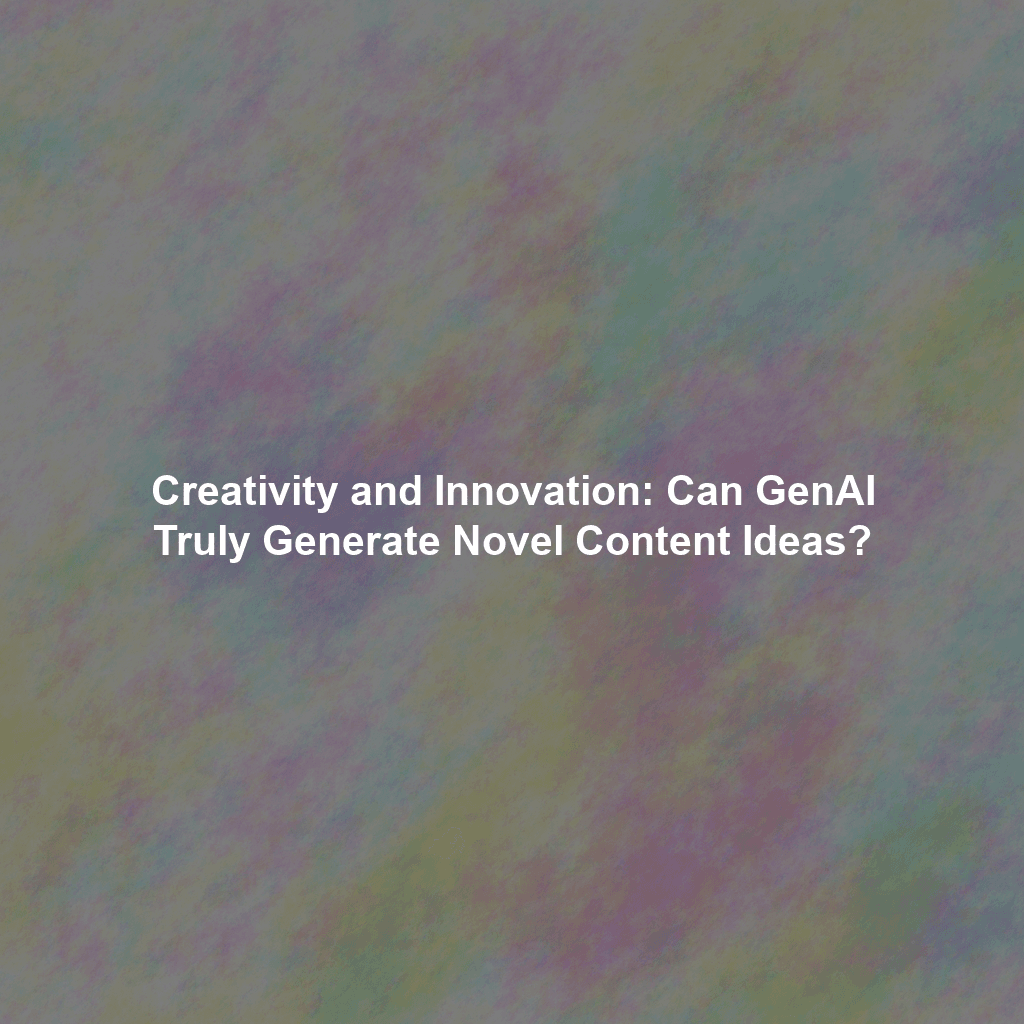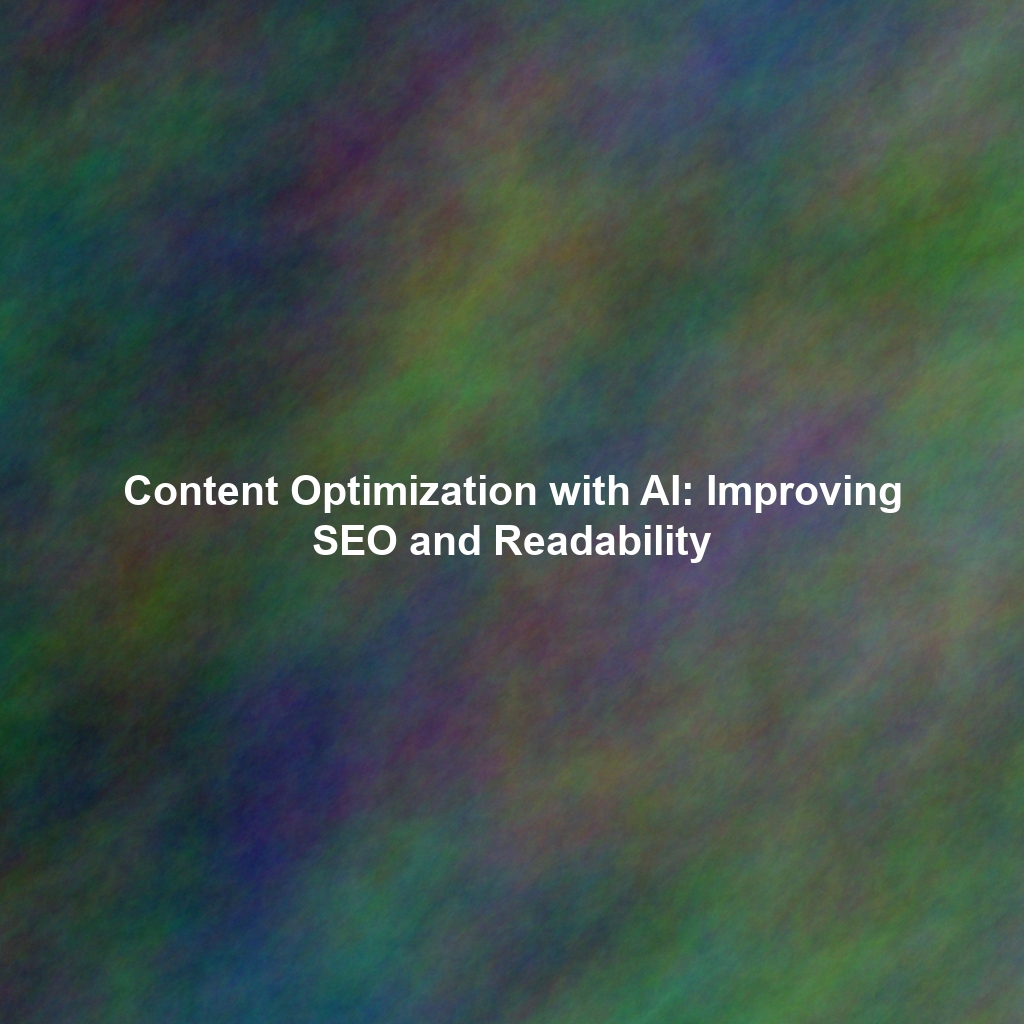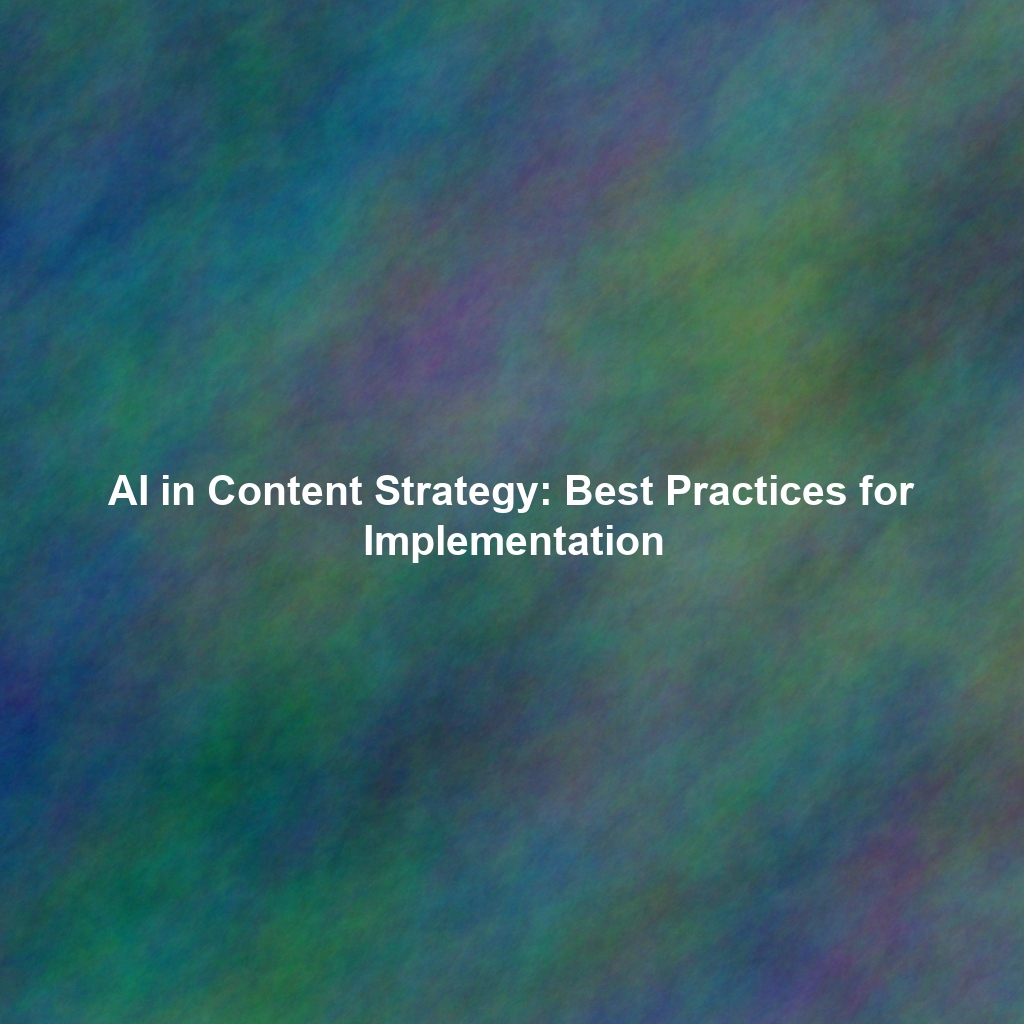The rise of Generative AI (GenAI) has sent ripples through the content creation landscape. Promises of automated content, increased efficiency, and even creative breakthroughs have captivated marketers and writers alike. But a crucial question remains: can GenAI truly generate novel content ideas, or is it merely a sophisticated regurgitator of existing information? This article delves into the creative potential of GenAI, examining its ability to conjure original ideas and innovative content formats, while also comparing its capabilities to the unique, nuanced creativity of humans.
The Promise of GenAI in Content Ideation
GenAI offers a powerful toolkit for brainstorming and content ideation. By analyzing vast datasets of text, images, and other media, it can identify patterns, trends, and gaps in the market. This capability allows GenAI to suggest potential topics, headlines, and even entire content outlines that might not have been immediately apparent to a human writer. Think of it as having access to a massive, ever-evolving database of content insights, ready to be tapped at a moment’s notice.
Speed and Efficiency: A Definite Advantage
One of the most significant advantages of GenAI is its speed. Generating dozens of potential content ideas in minutes is something a human team would struggle to match. This speed allows for rapid prototyping and experimentation, enabling marketers to quickly test different concepts and identify the most promising avenues to pursue. Furthermore, GenAI can automate tedious tasks such as keyword research and competitive analysis, freeing up human writers to focus on more creative and strategic aspects of content creation.
Overcoming Writer’s Block
We’ve all been there: staring at a blank screen, struggling to come up with a fresh angle or a compelling narrative. GenAI can be a valuable tool for overcoming writer’s block. By providing a range of potential starting points and perspectives, it can help spark new ideas and break through creative barriers. It’s like having a brainstorming partner who’s always available, regardless of the hour.
The Limitations of AI-Generated Creativity
Despite its impressive capabilities, GenAI is not without its limitations. Its creativity is largely based on pattern recognition and recombination. It excels at identifying existing trends and adapting them to new contexts, but it struggles with truly original thought – the kind of “out-of-the-box” thinking that often leads to groundbreaking innovations.
The “Human Touch” is Still Essential
While GenAI can generate grammatically correct and even stylistically pleasing text, it often lacks the emotional intelligence, empathy, and nuanced understanding of human experience that makes content truly resonate with audiences. Human writers are able to draw on personal experiences, cultural context, and intuitive insights to create content that is both informative and emotionally engaging. GenAI, at least in its current state, struggles to replicate this “human touch.” This includes understanding humor, sarcasm, and irony, which are crucial for connecting with an audience on a deeper level.
Risk of Plagiarism and Lack of Originality
Because GenAI relies on existing data, there’s a risk of generating content that inadvertently infringes on copyright or lacks originality. Careful editing and fact-checking are essential to ensure that AI-generated content is both accurate and unique. Simply prompting the AI is not enough; human oversight is critical to avoid plagiarism and to inject originality into the AI’s output.
SEO Optimization: A Double-Edged Sword
GenAI can be a valuable tool for SEO optimization, helping writers identify relevant keywords and optimize content for search engines. However, relying too heavily on AI-generated SEO strategies can lead to “keyword stuffing” and other practices that are penalized by search engines. A balanced approach is crucial, combining AI-powered insights with human expertise in SEO best practices. Furthermore, Google’s EEAT guidelines emphasize Expertise, Experience, Authoritativeness, and Trustworthiness. While AI can assist with some aspects, these are largely human qualities that need to be demonstrated through high-quality, well-researched, and thoughtfully crafted content. A piece of content written solely by AI, without human oversight, is unlikely to satisfy these guidelines.
GenAI vs. Human Creativity: A Collaborative Future
The future of content creation is likely to involve a collaborative partnership between GenAI and human writers. GenAI can handle the more routine and time-consuming tasks, such as research and initial drafting, while human writers can focus on the more creative and strategic aspects, such as refining the narrative, injecting personality, and ensuring that the content aligns with brand values. By combining the strengths of both, we can create content that is both efficient and engaging.
Ultimately, the question isn’t whether GenAI can replace human creativity, but how we can best leverage its capabilities to enhance and augment our own creative processes. It’s a tool, and like any tool, its effectiveness depends on how it’s used. By understanding its strengths and limitations, we can harness the power of GenAI to unlock new levels of creativity and innovation in content creation.
Conclusion
GenAI has undoubtedly opened new doors in content creation, particularly in brainstorming and generating initial drafts. However, it’s crucial to remember that it’s a tool, not a replacement for human creativity. The “human touch,” including emotional intelligence, nuanced understanding, and original thought, remains essential for creating truly engaging and impactful content. The most promising future lies in a collaborative approach, where GenAI assists human writers, enabling them to focus on the strategic and creative aspects of content creation, resulting in content that is both efficient and resonant.
 Skip to content
Skip to content

